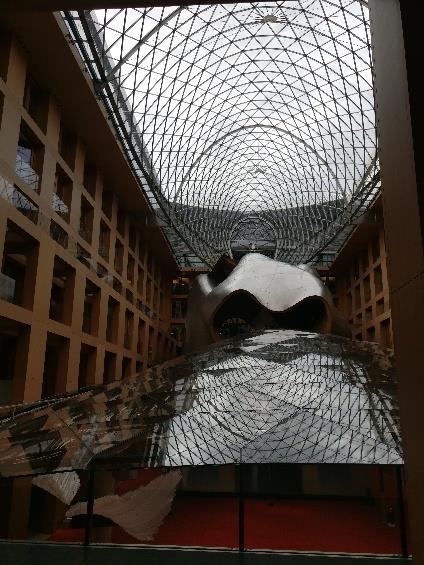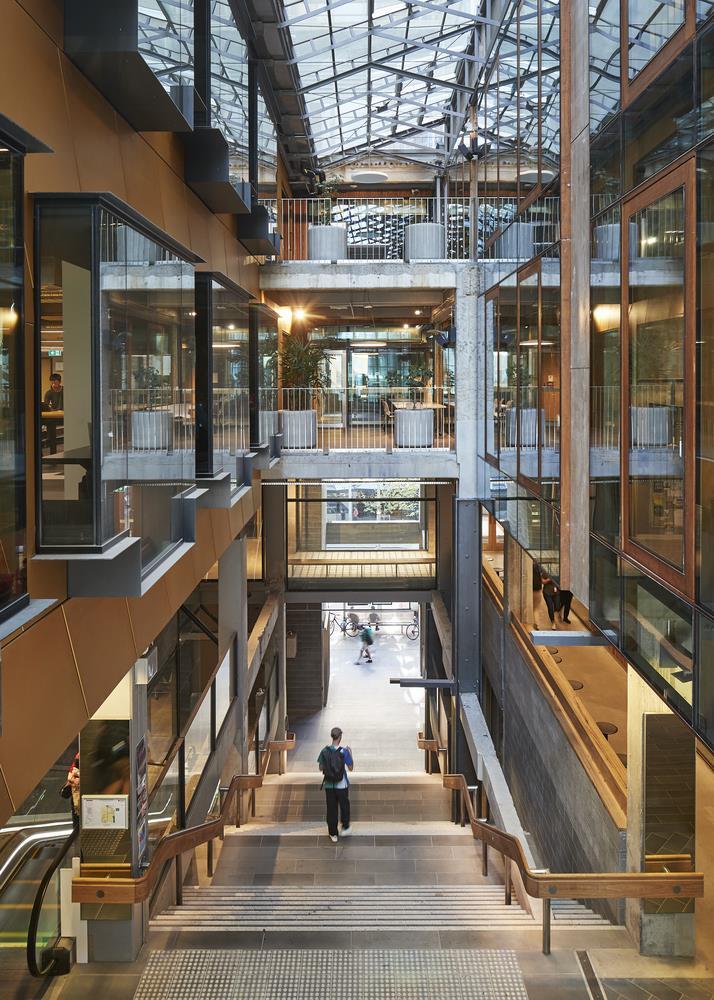
3 minute read
MATERIAL
Sai A. Pradhan l L. S. Raheja School of Architecture Traversing Through Architecture
FIGURE 47: PLAY OF MATERIALS BY THE USER OUTSIDE THE EMBASSIES IN GERMANY (IMAGE SOURCE- AUTHOR)
Advertisement
Sai A. Pradhan l L. S. Raheja School of Architecture Traversing Through Architecture
We, as humans, primarily perceive spaces though our eyes. Apart from the different scales, sizes and elements of architecture, our eyes also perceive a tactile imagery of the materials used in the space and structure. This helps the occupant feel or touch the spaces and interact with them on a deeper level.
Our vision is one of the primary ways we perceive our surroundings. The play of materials and their varying scales and sizes, helps us build a tactile imagery of the spaces around us which enables us to feel and touch through our eyes. The users can establish a deeper relationship with the space when the light touches these materials, giving rise to movement in the spaces.
Every material has their own characteristic with a distinct strength, texture, coarseness, permeability, etc. However, architects often coat these materials with another layer to give them a different colour and texture from their existing character. This makes it difficult for the user to differentiate between the spaces as each façade can camouflage with the surrounding context. When a structure uses a multiplicity of materials, it becomes easier to integrate the form with the spaces, leading to a cohesive design composition. (Space And Mass)
“He looked at the granite. To be cute, he thought, and made into walls. He looked at a tree. To be split and made into rafters. He looked at a streak of rust in the stone and thought of iron ore under the ground. To be melted and to emerge as girders against the
FIG URE 48: SO UR CE- A UT HO R sky.”
-Ayn Rand, The Fountainhead
The recent trend throws light on modern architecture which uses ‘modern’ materials which are form an envelope over the structure. But materials should become an inherent part of the design instead of an applied element. They would add depth and richness to the architecture, which would engage the users in the visual language of the structure. (Sarra, 2020)
Design is not separate from material selection; architecture must be considered holistically to bring maturity and authenticity to design.
Sai A. Pradhan l L. S. Raheja School of Architecture Traversing Through Architecture
Materiality in architecture is a concept or application of various materials or substances in the design of a building. It highlights the innate qualities of the materials and uses them as an architectural element to guide the person in a structure. When multiple materials are used, they form a pattern and give rhythm to the structure. It gives direction to the users and act as implied directional architectural elements. The composition, placement, and manipulation of materials is done with precision and intent; the result is form and materiality working in harmony to create architectural poetry. (Sarra, 2020) Along with materials, colours also play an important role in engaging the users. It is one of the fleeting qualities of the material as it tends to weather or fade over a period time. As colours are the reflection of light in multiple ways, when the colour is lighter, the architectural elements seem to approach the user. Conversely, the use of dark tones, seems to move away from the user. This plays an important factor when the user is approaching a space and engaging in the various elements of the structure. When materials, their colours and the form interact with each other, it gets translated into a deeper interaction between the user and the structure. Preserving the identity of the materials used in the structure and highlighting them to create spaces, leads to an enhanced understanding of the space. It adds to the details of the structure which help the space be felt.

Sai A. Pradhan l L. S. Raheja School of Architecture Traversing Through Architecture







